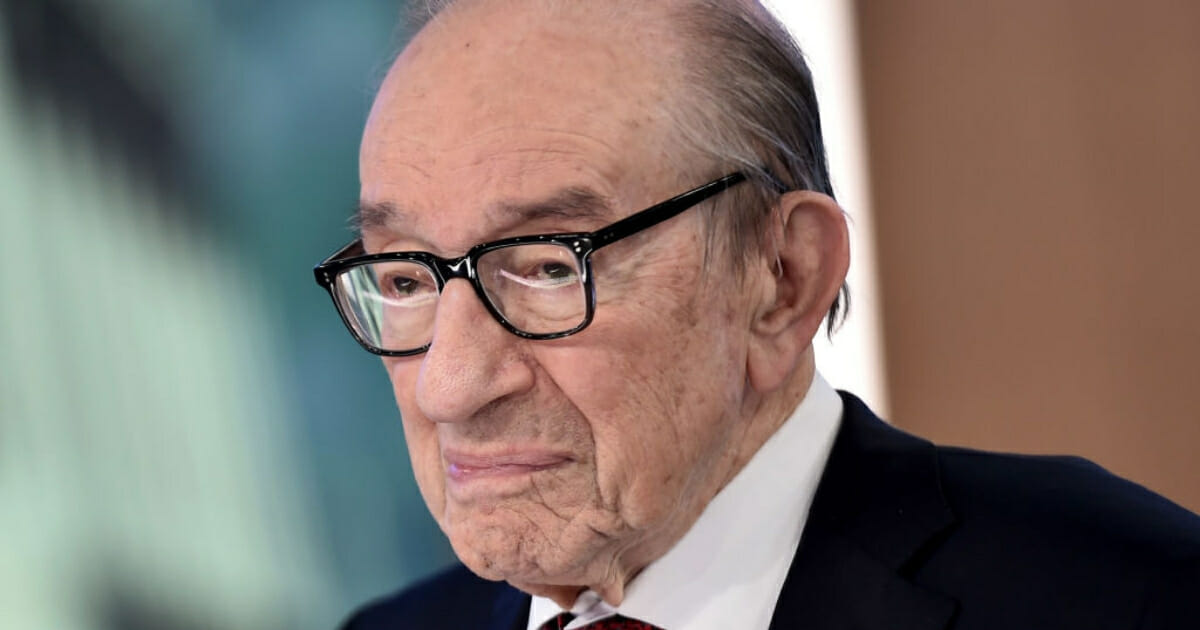
Dick Morris: Greenspan Says He Got Inflation Wrong... Sorry, Folks
President Donald Trump’s nominees to the Federal Reserve Board — Herman Cain and Stephen Moore — were both forced to withdraw by the banking establishment which rebelled against having outsiders on the Fed.
Their cardinal sin was to urge more cuts in interest rates to further stimulate the economy, disregarding fears of inflation, the institutional bugaboo of the Fed.
But now, Alan Greenspan — who led the Fed from 1987-2006 — admits that the Board’s measurement of inflation has been wrong all along, tending to exaggerate it by at least two points per year.
A column in The Wall Street Journal by Andy Kessler draws attention to an admission by Greenspan in an interview at the Wharton School that “we have a problem with measuring inflation.”
He admits that “if you had a 2 percent inflation rate as currently measured, it’s the equivalent of zero for actually what consumers are buying.”
Why? Because consumers are smart and constantly change what they buy to avoid high prices.
The traditional inflation measurement is based on a “market basket” of products. It assumes shoppers are idiots, buying the same stuff this week that they bought last week despite prices rising.
But shoppers are way smarter than that.
Recipes for dinner change to use less expensive products. New technology offers lower cost alternatives. The cost of new gadgets drops shortly after they are introduced.
Kessler writes that he believes “that all of the common measures overshoot [inflation] by at least 2 percentage points, and maybe even 5 or more.”
That means that every cost of living government program or private contract containing a cost of living adjustment is wrong and that our economy could have grown by vastly more without risking serious inflation.
Kessler estimates that a two percent adjustment downward in inflation statistics, starting in 1989 (two years after Greenspan took over) would have yielded a $26 trillion GDP by now — one-third larger than we have — one-third more for Americans to have in making ends meet.
When society and the economy change, the Federal Reserve should not be the last place to notice.
From 1987 until 2006, America’s political leadership lived in awe of Greenspan, who, in turn, lived in terror of inflation.
There was none, but their imagination conjured the threat.
During the Clinton years, in particular, the president strained against the reins being pulled in by Greenspan as he tried to enact measures to stimulate the economy and create the jobs that Americans wanted and needed.
Each time he proposed increases in spending, the executive branch would hold its collective breath to see what the Fed would say.
In 1993, Clinton raised the gas tax because, he told me, Greenspan was so worried about inflation that he insisted on a tax increase to show Clinton’s willingness to bear political pain to hold down the deficit.
“The increase in the income tax on the upper brackets that I passed wasn’t enough,” Clinton said. “Greenspan wanted to see if I’d raise a broad-based tax and take the political heat.”
The president’s reward for meeting the Greenspan test was that the Fed would let interest rates drop. The punishment was that the measures he had to take helped the Republicans take Congress away from him.
Now, Greenspan says, in effect, “Oops! I may have made a mistake” by exaggerating the risk of inflation. Maybe we could have stimulated the economy more.
Seriously? You think?
Clinton knew this and would rant and rave — in private — against Greenspan’s inflation fetish.
There was no inflation anyplace but in the nightmares of the Fed chairman and, based on what were obviously obsolete statistics, he was holding the economy down, depriving people of jobs they needed.
So now, 13 years after retiring, Greenspan says maybe the whole basis of his economic guidance was flawed.
Sorry, folks.
The lesson for today is: Don’t trust the economists.
Temper their pronouncements from the mount with a dose of real-world common sense and an understanding of how real people live and make decisions. Force them out of their ivory towers and onto supermarket aisles so they can see reality.
CORRECTION, May 15, 2019: As originally published, this Op-Ed named Alan Greenspan as the chairman of the Board of Governors of the Federal Reserve Board from 1987 to 2016. His last term ended on Jan. 31, 2006.
We have corrected the error in the date and apologize for any confusion we may have caused.
The views expressed in this opinion article are those of their author and are not necessarily either shared or endorsed by the owners of this website. If you are interested in contributing an Op-Ed to The Western Journal, you can learn about our submission guidelines and process here.
Truth and Accuracy
We are committed to truth and accuracy in all of our journalism. Read our editorial standards.
Advertise with The Western Journal and reach millions of highly engaged readers, while supporting our work. Advertise Today.












